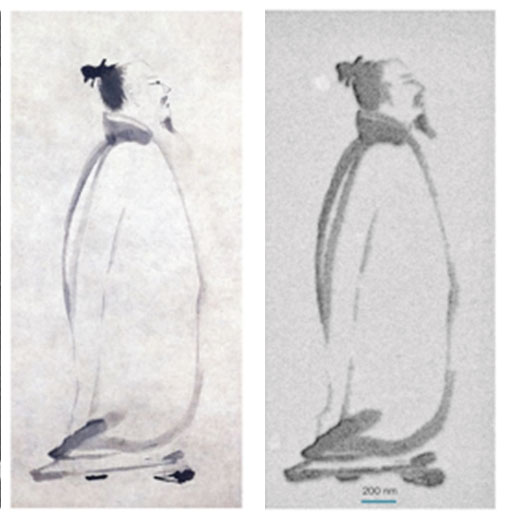Delft researchers gave a microscope a twist and turned it into a record-breaking fabrication tool for nanoscopic devices.
“Look at these little lines, they look dull, don’t they?”, asks nanotechnologist Dr Paul Alkemade (Applied Sciences), pointing at a little piece of silicon.
“But these stripes are only 5.5 nanometres wide and run perfectly parallel. You cannot get them much smaller than this. We published these results two years ago, and broke the record. We were just ahead of MIT,” Alkemade says joyfully.
What Alkemade shows are structures made with a helium ion microscope. Together with researchers from TNO, Alkemade uses this machine to generate patterns in, for instance, silicon. Usually electrons are used for this purpose, but since helium ions are bigger than electrons, they scatter a lot less when they hit the substrate, enabling the researchers to make much smaller structures.
With the machine, which was acquired by TNO three years ago and which was initially intended for studying surfaces of organic materials, a whole new field in nanofabrication has opened up.
The scientists for example utilise a technique called ion-beam-induced deposition, which involves shooting ions on platinum-containing gas molecules. As these molecules then decompose, and the platinum atoms are freed and pile up on the underlying substrate. The researchers construct tiny structures by judiciously moving the ion beam during the deposition.
Alkemade has received funding from STW, the Dutch technology foundation, to hire two PhD students. One of them will try to improve the production of masks for the chip industry. The helium ion canon is not fast enough, at least not yet, to make complete masks; consequently, for this purpose, electron beam lithography is still standard practice. The helium ion canon can however be used to make precise repairs on the masks.
The second PhD student will use this machine to make nanoscopic machines with, for instance, membranes and wires, in order to study quantum mechanical behaviour of small devices or the movement of molecules. In other words: to discover new physics.
De Nuffic zet in het rapport (pdf) op een rij hoe het staat met de internationalisering van het hoger onderwijs. De meeste buitenlandse studenten kiezen in Nederland voor een economische opleiding. Maar procentueel scoren landbouw-opleidingen (wo) en kunst en cultuur opleidingen (hbo) het hoogst als het gaat om het aantrekken van buitenlandse studenten.
Kunstacademies
In de top vijf van instellingen met een relatief grote internationale studentenpopulatie staan vier kunstacademies en één universiteit. Codarts, Hogeschool voor de Kunsten in Rotterdam staat ondanks een lichte daling nog steeds bovenaan: 43,5 procent van de studenten komt er uit het buitenland. De Universiteit Maastricht volgt, met 39,8 procent. Ook de Hogeschool van Beeldende Kunst, Muziek en Dans in Den Haag, de Gerrit Rietveld Academie en de Design Academy Eindhoven tellen relatief veel buitenlandse studenten. De TU Delft komt in die ranglijst niet in de top tien.
Vrouwen
Doordat het totale aantal studenten groeide, bleef het gemiddelde aandeel buitenlanders op 7,4 procent steken: 6,4 procent in het hbo en 9,3 procent in het wo. Ongeveer zestig procent van hen is vrouw. Duitsers vormen nog steeds de grootste groep buitenlandse studenten: bijna 21 duizend, oftewel 44 procent. China en België volgen met acht en vijf procent.
TU Delft
Voor Chinezen is de TU Delft de meeste favoriete instelling in het hoger onderwijs. Er zitten ook veel Chinezen op de Hogeschool Rotterdam en de Haagse Hogeschool. De TU Delft trekt binnen het hoger onderwijs verder de meeste studenten uit Colombia, Griekenland, India, Indonesië, Iran. Italië, Mexico, Nigeria, Portugal, Suriname. Taiwan en Zuid-Korea. De TU scoort ook goed onder Belgen; alleen Maastricht heeft er meer binnen de poorten. Ook het aantal Ethiopiërs is in Delft relatief hoog. Alleen in Wageningen zitten er meer.
Zesde plaats
Die toestroom leidt ertoe dat de TU Delft zesde staat als het gaat om het absolute aantal buitenlandse studenten. Met 2239 is Delft net verdrongen van de vijfde plaats door Stenden Hogeschool (2251). Koploper is Maastricht, waar 5760 buitenlanders studeren.



Comments are closed.